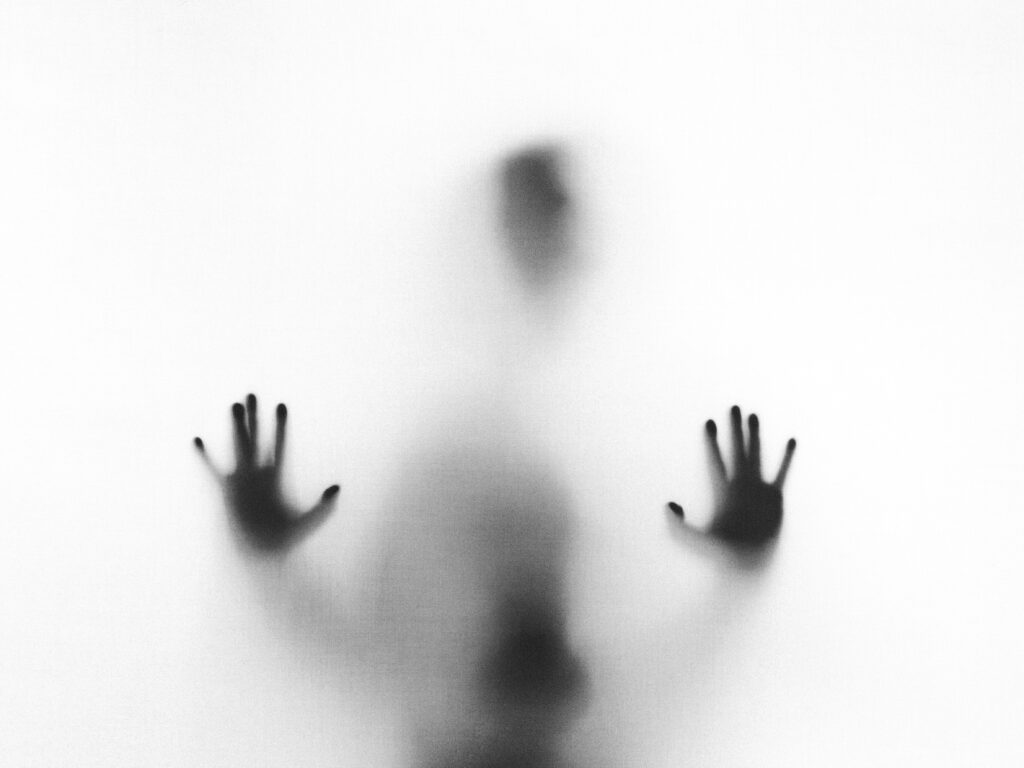Last Updated on December 27, 2023
Imagine waking up every morning with an overwhelming sense of dread, your chest heavy and your thoughts racing like an out-of-control freight train. Picture the persistent, gnawing feeling of despair, slowly eroding your happiness, turning life’s colors into shades of gray. This is the daily reality for millions of individuals worldwide who grapple with emotional turmoil. In this article, we’ll embark on a journey through the emotional maze, guiding you through the complex terrain of stress, body tension, panic, and depression.
The Importance of Addressing Emotional Challenges
Emotional challenges are a universal human experience. They don’t discriminate by age, gender, or socioeconomic status. In fact, they’re often silent companions to our daily lives, affecting our health, relationships, and overall well-being. Ignoring these emotional states can lead to dire consequences, but understanding them and learning to navigate the emotional maze can be transformative.
Understanding the Emotional Maze
Stress, body tension, panic, and depression are distinct emotional states, each with its unique characteristics. Stress often acts as a precursor to the others, leading to heightened body tension, which may escalate into panic attacks and, in some cases, culminate in depression. Understanding the nuances and relationships between these emotional states is the first step in navigating the emotional maze.
The Science of Stress
Stress is a powerful force in our lives, and cortisol, often referred to as the body’s stress hormone, plays a pivotal role in the body’s response to stress. It readies the body for action by increasing energy, suppressing the immune system, enhancing cardiovascular function, alertness, and pain tolerance.
However, chronic or excessive stress can lead to dysregulation of the HPA axis, resulting in long-term elevation of cortisol levels. This can contribute to a range of health problems, including anxiety, depression, cardiovascular issues, and immune system dysfunction.
Stress can stem from various sources, from work-related pressures and personal relationships to financial woes and health concerns. We’ll explore common stressors and triggers to help you identify the root causes of your own emotional turmoil.
Recognizing Body Tension
Understanding how stress manifests physically is crucial. Common symptoms and signs of stress encompass a wide array of manifestations, from headaches and muscle aches to fatigue, digestive issues, changes in appetite, cognitive difficulties, irritability, anxiety, depression, increased heart rate, respiratory problems, skin issues, weakened immune system, and sleep disturbances. Recognizing these symptoms becomes paramount for early intervention and effective stress management.
The profound link between our mental and emotional well-being and our physical health is known as the mind-body connection. As previously mentioned, stress prompts our brain to release hormones that can lead to a range of physical symptoms, including muscle tension, digestive problems, skin issues, and more. Understanding this connection is vital because it underscores how our emotions can directly influence our physical health.
In the pursuit of relief from these stress-induced physical symptoms, we can find some solace in muscle tension massage and body tension relief techniques. Specialized massages like deep tissue or Swedish massage are tailored to alleviate the tightness and knots that often accompany stress-related muscle aches. These massage therapies work to induce relaxation, enhance blood circulation, and release the accumulated tension within the muscles, ultimately providing a profound sense of relief.
Coping Stress Mechanisms
1. Mindfulness and Relaxation Techniques
Mindfulness practices, such as meditation and deep breathing, can help individuals regain control over their emotions by fostering self-awareness and reducing the reactivity of the “fight or flight” response to stressors. These techniques encourage individuals to stay present in the moment and detach from overwhelming thoughts or emotions. Relaxation techniques, such as progressive muscle relaxation or guided imagery, can also ease physical tension, calming the body’s stress response and promoting emotional stability.
2. Exercise, Diet, and Sleep as Stress Management Tools
Proper nutrition, regular exercise, and quality sleep are vital components of a healthy lifestyle that can aid in coping with emotional challenges. Exercise releases endorphins, which are natural mood elevators, while a balanced diet provides the necessary nutrients for optimal brain function. Adequate sleep ensures better emotional regulation and helps the body recover from stress. Together, these elements form a robust defense against the negative effects of stress.
3. Coping with High Stress Levels
When facing exceptionally high stress levels, we can employ strategies such as time management, setting boundaries, and prioritizing self-care. Practicing resilience by reframing negative thoughts and seeking social support can also help prevent stress from escalating to debilitating emotional states. Additionally, engaging in hobbies or relaxation activities can offer a welcome escape from the pressures of high stress.
4. Seeking Professional Help When Needed
If stress becomes overwhelming and self-help strategies are insufficient, it is crucial to seek professional assistance. Signs that professional help may be needed include persistent and severe emotional distress, physical symptoms like chronic headaches or insomnia, or interference with daily functioning.
Licensed therapists, counselors, or mental health professionals can offer tailored strategies, therapy, or medication to address underlying issues and help individuals regain control over their emotional well-being. Don’t hesitate to reach out when stress becomes unmanageable, as timely intervention is essential for emotional health.

Navigating Panic Attacks
Panic attacks are intense episodes of fear and anxiety, often accompanied by distressing physical symptoms such as a racing heart, shortness of breath, and a pervasive sense of impending doom. They are a defining characteristic of panic disorder, a condition marked by recurrent and unexpected episodes that significantly disrupt a person’s daily life and well-being.
Common signs of a panic attack encompass an abrupt and overwhelming surge of fear or dread, chest discomfort, trembling, perspiration, dizziness, and a feeling of detachment from reality. Recognizing these signs is essential for effective management.
Immediate Coping Strategies During a Panic Attack
When experiencing a panic attack, it’s important to focus on slow, deep breathing to regulate your body’s response. Find a quiet, safe space if possible, and remind yourself that the attack will pass. Try grounding techniques, such as counting objects in the room or using positive affirmations to calm your mind. Seeking support from a trusted friend or therapist can also be helpful.
Managing Emotions in Recovery
After a panic attack, it’s essential to practice self-care and stress management techniques to reduce the risk of future attacks. This includes maintaining a healthy lifestyle, managing stress through relaxation exercises or meditation, and seeking therapy to address underlying causes or triggers.
Developing a support network and educating yourself about panic disorder can also be empowering in your journey toward recovery.
Long-term Management of Panic
1. Therapy Options (CBT & Exposure)
Cognitive-Behavioral Therapy (CBT) and Exposure Therapy are two highly effective therapeutic options for managing panic disorder. CBT helps individuals identify and reframe irrational thought patterns that contribute to panic attacks, teaching them coping strategies to reduce anxiety.
Exposure Therapy involves gradually and safely exposing individuals to their triggers, helping them desensitize and learn to manage their anxiety responses. Both therapies have been shown to be successful in reducing the frequency and severity of panic attacks, offering long-term benefits and improved quality of life.
2. Medication and Their Role in Panic Disorder Treatment
Medication can play a valuable role in panic disorder treatment, particularly for individuals with severe symptoms. Antidepressants, such as SSRIs or SNRIs, are often prescribed to help regulate mood and reduce anxiety. Benzodiazepines can provide rapid relief during acute panic attacks but are typically used sparingly due to their potential for dependency and side effects.
Medication should be considered in conjunction with therapy, as it can alleviate symptoms and create a stable foundation for psychological interventions.
3. Self-Help Practices for Preventing Panic Attacks
Self-help practices and lifestyle adjustments can complement professional treatment and help prevent panic attacks in the long run. Regular exercise, healthy eating, and maintaining a consistent sleep schedule can contribute to overall well-being and reduce anxiety. Stress management techniques, such as mindfulness meditation and deep breathing exercises, can also be beneficial in preventing panic attacks. Avoiding or minimizing triggers, such as caffeine or alcohol, can further contribute to a more stable and anxiety-free life.
The Depths of Depression
Depression is a mood disorder characterized by persistent feelings of sadness, hopelessness, and a lack of interest or pleasure in daily activities. It can manifest in various forms, with major depressive disorder (MDD) being the most common. Other forms include persistent depressive disorder (dysthymia), bipolar disorder, and seasonal affective disorder (SAD), which is linked to changes in seasons and light exposure.
Symptoms and Diagnostic Criteria
Symptoms and diagnostic criteria for clinical depression, such as major depressive disorder (MDD), include the presence of at least five of the following symptoms over a two-week period, representing a change from previous functioning:
- Persistent low mood or a feeling of sadness.
- Decreased interest or pleasure in activities once enjoyed (anhedonia).
- Significant changes in appetite or weight.
- Sleep disturbances, including insomnia or excessive sleeping.
- Fatigue and low energy levels.
- Feelings of worthlessness or excessive guilt.
- Difficulty concentrating or making decisions.
- Agitation or slowing of physical and mental processes.
- Recurrent thoughts of death or suicide.
Distinguishing clinical depression from occasional sadness involves the duration, intensity, and functional impairment.
Clinical depression is characterized by the persistence of these symptoms for at least two weeks, and they are typically severe enough to disrupt daily life, including work, relationships, and self-care. In contrast, occasional sadness is usually a temporary emotional response to specific life events and does not lead to such profound and prolonged disruptions. Seeking professional help is crucial when these criteria for clinical depression are met, as it can significantly impact one’s well-being and may require treatment and support.
The Societal Impact of Depression
Depression’s societal impact is substantial, affecting not only individuals but also their families, workplaces, and communities. It can lead to reduced productivity, increased healthcare costs, and strained interpersonal relationships. Depression also contributes to a higher risk of substance abuse, homelessness, and in severe cases, can result in self-harm or suicide.
Addressing depression is vital not only for the well-being of affected individuals but also for the broader societal and economic well-being.

Coping with Depression
Coping with depression is a complex and deeply personal journey, as it encompasses a wide range of emotional, psychological, and physical factors that affect individuals differently. This multifaceted condition necessitates a holistic approach that acknowledges the interconnectedness of mind and body, emphasizing the importance of addressing lifestyle factors, seeking therapeutic support, and considering various treatment options to promote mental well-being and recovery.
1. Lifestyle Changes and Self-Care
Engaging in regular exercise, maintaining a balanced diet, getting adequate sleep, and practicing stress-reduction techniques can significantly improve one’s mood and overall mental well-being. Establishing a daily routine that includes these self-care practices is crucial in managing depression.
2. Therapy and Counseling
Therapy and counseling, such as cognitive-behavioral therapy (CBT), interpersonal therapy, and psychoanalysis, play a vital role in treating depression. These therapeutic approaches help individuals explore and address the root causes of their depression, develop coping strategies, and build healthier thought patterns and relationships, leading to improved mental health.
3. Medication and Alternative Treatments
Medication can be a valuable tool for individuals with depression, particularly in cases of severe or treatment-resistant depression. Antidepressant medications, when prescribed and monitored by a healthcare professional, can help alleviate symptoms.
However, alternative treatments like mindfulness meditation, acupuncture, and herbal supplements can also be considered, either as standalone options or as complementary strategies, in consultation with a healthcare provider. It’s important to approach alternative treatments with caution and ensure they are evidence-based and safe.
Creating a Personalized Coping Plan
To tailor coping strategies to your specific needs, it’s essential to first self-reflect and identify your unique triggers and responses to stress, body tension, panic, and depression. Start by keeping a journal to track your emotional patterns and identify when and why these emotions arise.
Then, explore a variety of coping techniques such as mindfulness, exercise, therapy, or relaxation exercises, and experiment with what works best for you. Customizing your coping plan involves selecting the strategies that resonate with you personally and incorporating them into your daily routine to address your unique emotional challenges effectively.
Setting and achieving emotional well-being goals begins with setting realistic and specific objectives. Identify the areas of your emotional well-being that you want to improve, such as reducing stress, managing body tension, or minimizing panic and depression episodes. Break these larger goals into smaller, achievable steps.
For instance, if your goal is to reduce stress, you can start by committing to daily 10-minute mindfulness sessions. Regularly monitor your progress by tracking your efforts, and make adjustments as needed. Celebrate your achievements along the way to stay motivated and empowered in your journey toward emotional well-being.
Conclusion: Navigating Emotional Challenges
Navigating the emotional maze of stress, body tension, panic, and depression is a complex journey that requires understanding, self-awareness, and a personalized approach. Emotional challenges are universal and can impact every aspect of our lives, making it crucial to address them proactively.
Coping mechanisms such as mindfulness, exercise, diet, and sleep play a pivotal role in managing emotional challenges, while seeking professional help when necessary is a crucial step in the process.
Understanding and managing panic attacks involve immediate coping strategies and long-term solutions, such as therapy and medication.
Depression, a deeply impactful condition, requires a holistic approach that includes lifestyle changes, therapy, and, when appropriate, medication or alternative treatments.
Creating a personalized coping plan tailored to your unique needs is essential, as it empowers you to take control of your emotional well-being and set achievable goals for improvement.
This journey through the emotional maze is a testament to the resilience of the human spirit and the potential for positive change, offering hope and encouragement to those facing emotional challenges. Remember that, with the right tools, support, and determination, you can find your way to a brighter, healthier, and more emotionally balanced future.







